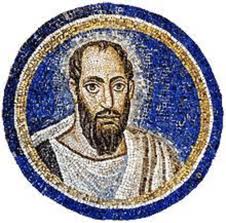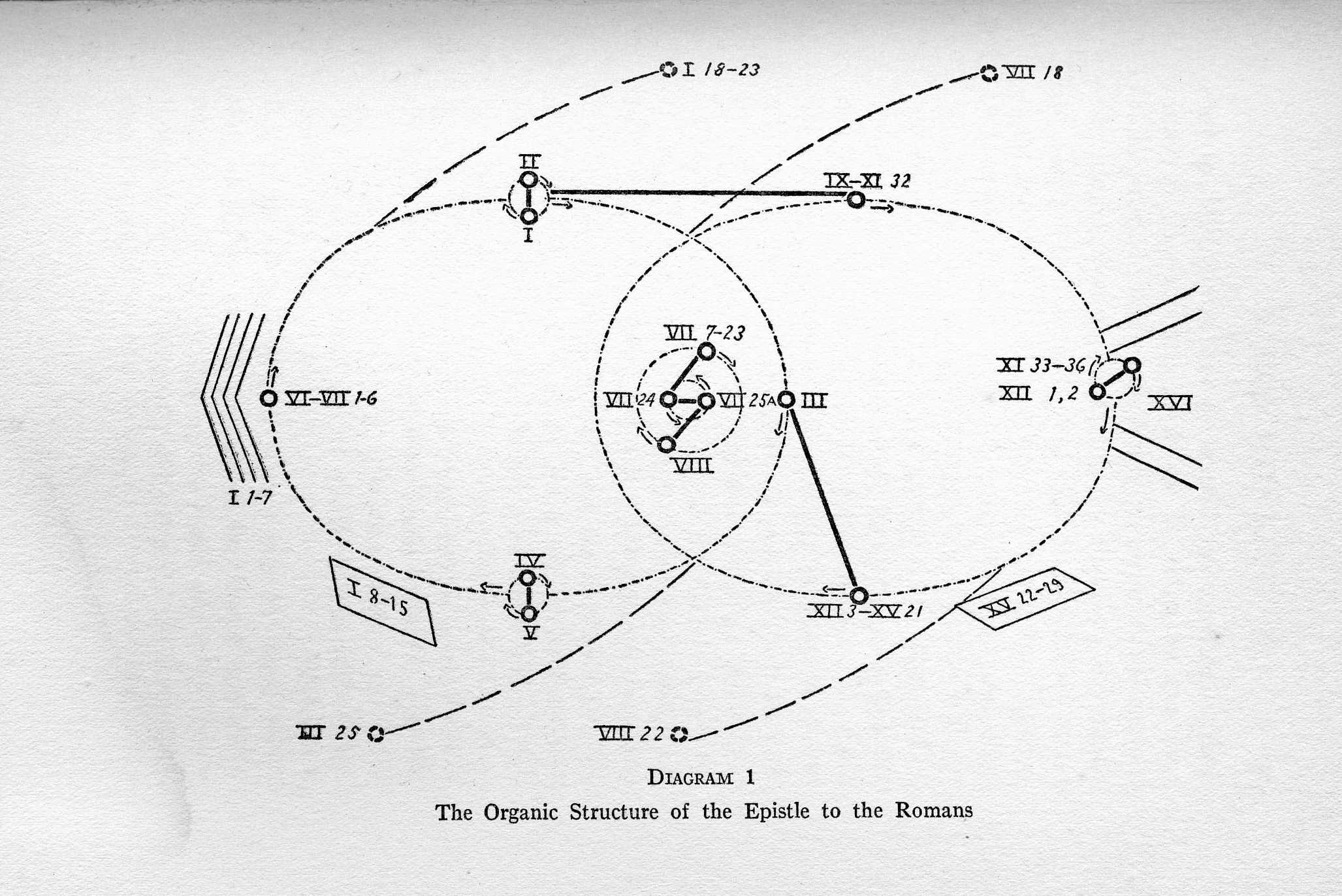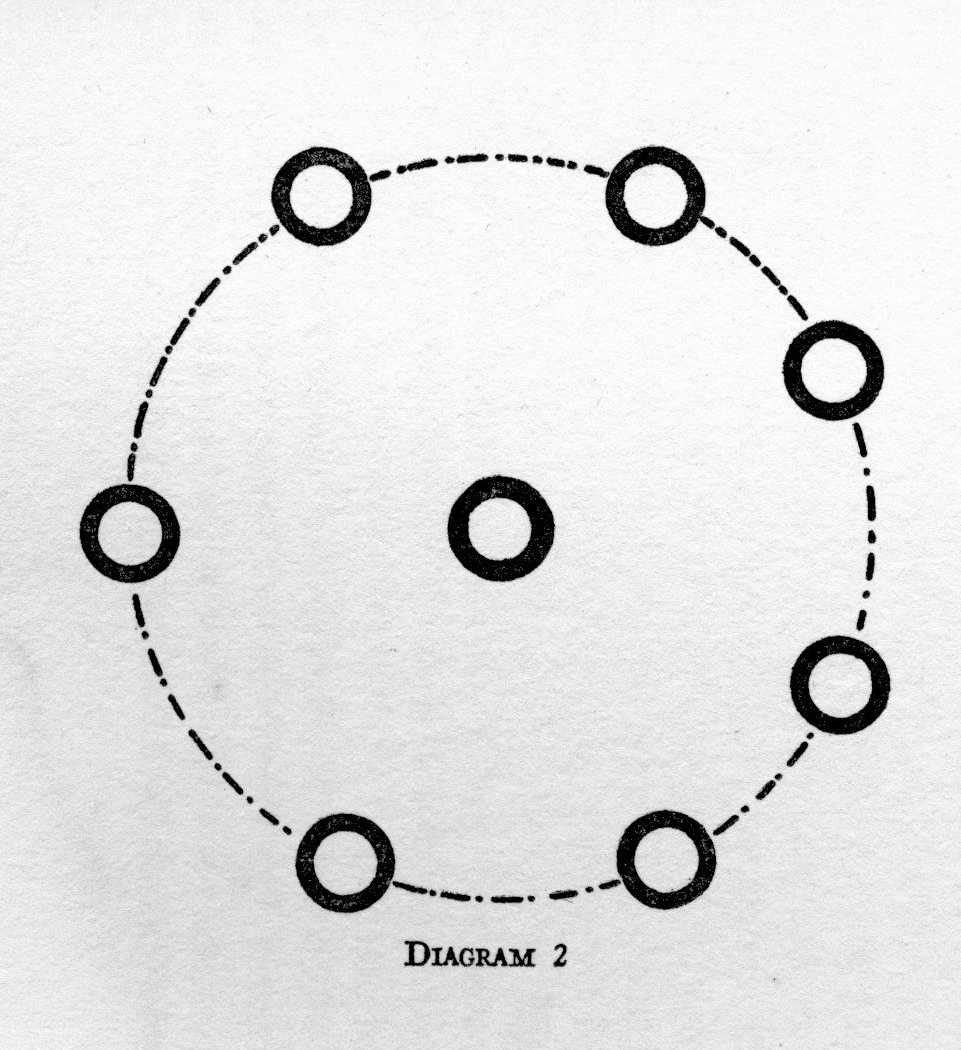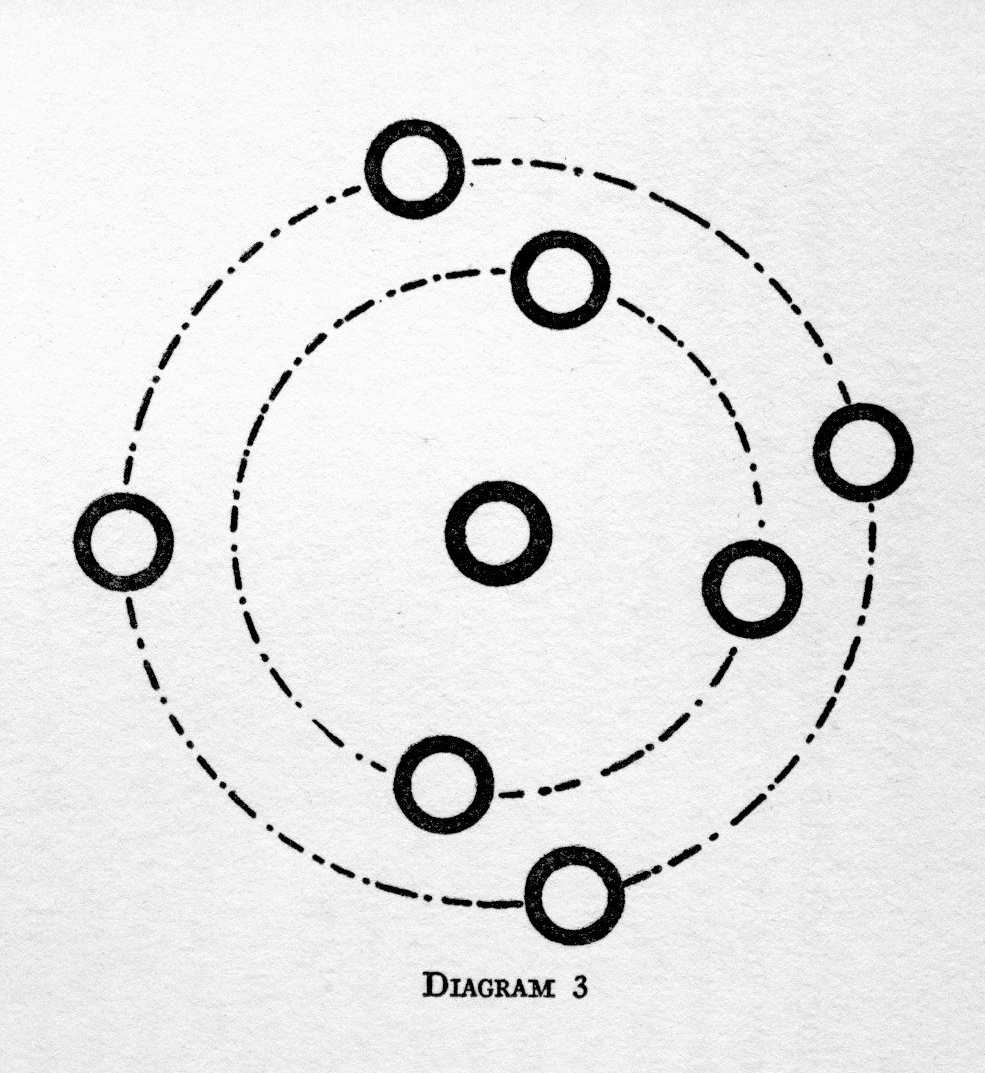

 |
|
|
This diagram is based on one of the current conceptions of the structure of an atom. According to this conception an atom consists of a proton, a positive charge of electricity, around which revolve a number of electrons, negative charges of electricity, somewhat as planets revolve around the sun. The proton is the sun, the electrons are the planets. The electrons may be conceived in one orbit as in digaram 2. Or they may be conceived as grouped into two orbits, as in diagram 3. This represents in a rough way the structure of the epistle to the Romans. I have used a proton and two orbits of electrons rather than one orbit, because the epistle naturally divides itself into three parts, addressed severally to our three centres or foci of attention.
 |
|
|
The heart of the epistle, where Paul lived, is of course the emotional or feeling centre. This is the proton. For the heart of the epistle, the proton, we have verses 24, 25 in the 7th Chapter:
"Miserable man that I am, who will rescue me from the body of this death? God, to whom be thanks through Jesus Christ our Lord."
Inconceivable as it may seem to us at first, the whole epistle is built on that double statement, the fact of sin and the way out. Everything in the epistle is in amplication or illustration of one-half or the other of that double statement, and relates back directly to it. The portion of the epistle before this proton is devoted more or less to intellectual demonstration, so I consider each of the first six chapters an electron and put them all into one orbit, say the inner orbit. The latter part of the epistle is addressed more or less to our practical nature, so the chapters which follow our proton I have grouped in the other orbit.
 |
|
|
So we have our preliminary picture of the epistle, first of all a central sun, that double statement I have quoted. Around this sun revolve as planets the chapters of the first part of the epistle in one orbit, and the chapters of the last part in another orbit. Now if you will consider that these planets or electrons are held in the solar system or atom by their attraction to the central sun or proton and not by their relation to each other, you will begin to see how the epistle is really constructed, and why the ordinary method of logical analysis cannot be applied to it. Such method seeks for the essential structure in the relation of the chapters to each other. But in the case of the epistle to the Romans, the relationship of the chapters to each other is incidental not essential. Their essential relationship is to the central sn, the heart of the epistle.
The main difference between diagram 1 and diagram 3 is that I have pulled one orbit forward to indicate that it represents the earlier part of the epistle, and pushed the other orbit to the right to indicate that it represents the latter part of the epistle. This is the main change. I have made the orbits elliptical instead of circular merely for purposes of convenience, and there are some other details added which I shall refer to later.
Now let us look at diagram 1 more in detail. First let us look at the proton. This appears here in a form which requires some explanation. A living organism is not simple, and we are here dealing with a living thought. I have described the proton of an atom as a sort of central sun and so you might expect the nucleus of our diagram to be a single circle. But you will remember that some suns which seem to be one are really twin suns whirling about each other and functioning as a unit. So, as the statement which is the heart of our epistle is a double statement, the fact of sin and the way out, I have represented our proton as a twin sun, the two parts whirling about each other in a small orbit, the little circle at the centre of the diagram, representing in condensed form the two verses.
Immediately before and immediately after, Paul states more fully the thought, and so we have, as it were, as an addition to the proton, the 7th and 8th Chapters. In the 7th Chapter Paul relates in detail how he saw himself. He saw that he was not acting of his own will, but that something was making him act as he did. That was a great discovery, and explains what he means by "the body of this death." His other great discovery was the way out—only one way—and that is developed in Chapter 8, leading up to one of the greatest lyrical expressions of confidence and knowledge of the technique of Salvation (if we so wish to call it) which is found in any literature:
"Yet among all these things we are more than conquerers through Him who has loved us. For I am convinced that neither death, nor life, nor nature, nor powers, nor height, nor depth, nor any other created thing, shall be able to separate us from the love of God which is in Christ Jesus our Lord."
So in the diagram I have drawn a second circular orbit close to the first and on that second orbit I have put Chapters 7 and 8 as integral parts of our proton. So we have as our central sun not a twin sun but a sun in four parts. Disregard those four parts if it is simpler for you. Just consider that the heart of the epistle is Chapters 7 and 8, the double statement, the fact of sin and the way out. From that central thought the epistle develops itself. You must start from the centre and work outward in order to get the structure.